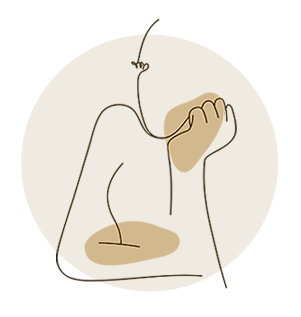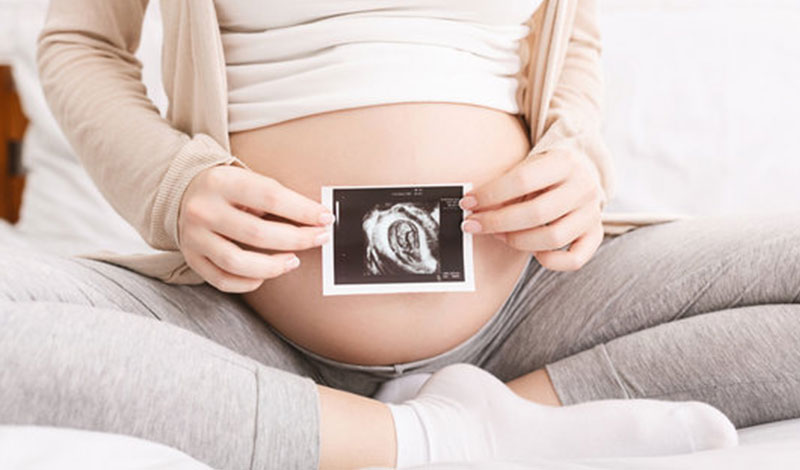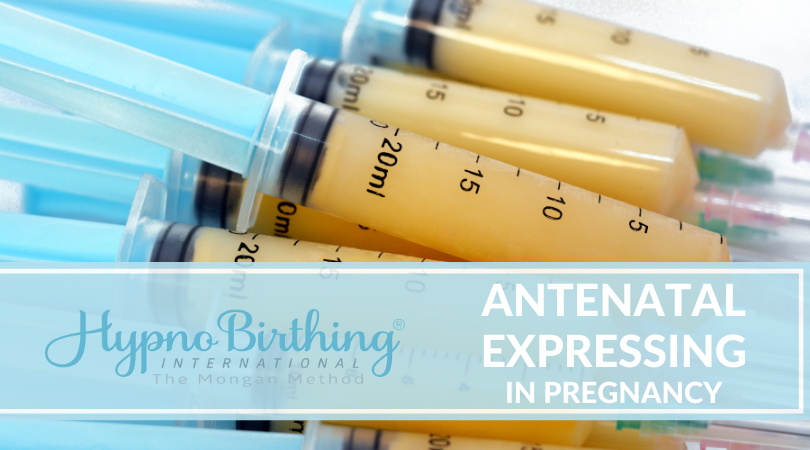Pregnancy is known to come with a considerable shift in hormones in women’s bodies, to adapt to the changes pregnancy brings, while staying pregnant. We still do not know exactly how labour is naturally initiated. Hormones play a major role in the physiology of labour, however, they can easily be altered by external factors. Let’s take a closer look at the different hormones of labour and look at how the birthing environment can foster or impede healthy hormone release.
The Hormones of Labour
Progesterone & Oestrogen
Progesterone and oestrogen are two steroid hormones released from the placenta, believed to work together leading up to labour. Progesterone is highest in pregnancy, during which it keeps the uterus relaxed, and the cervix firm. It protects the pregnancy by preventing the body from going into labour. Oestrogen, on the other hand, promotes uterine contractions and cervical ripening, as well as increasing the number of oxytocin receptors in the uterus. As pregnancy comes close to the end, progesterone levels drop, while oestrogen levels increase, helping labour take its natural course.
Oxytocin: the Love Hormone
This hormone is well known because it is associated with the beautiful things in life: sex, orgasms, birthing, breastfeeding, and simply being surrounded by loved ones. Its main role during labour is to create surges of the uterus. It comes from a part of the brain called the hypothalamus and is released rhythmically into the bloodstream. Hence the regular surges of labour. In preparation for labour, the number of oxytocin receptors naturally increases, and the more oxytocin receptors present in the body, the more sensitive a woman is to the hormone. Oxytocin increases as labour progresses and as the baby’s head descends into the labour section of the vagina, the stretching of tissues stimulates further release of oxytocin. A positive feedback loop is then created where:
Surge → baby’s head descends → stretching of the lower vaginal tissue → release of oxytocin → surge.
This feedback loop is referred to as the Ferguson Reflex and is most likely observed in undisturbed, physiological birth. Using the same physiology of contracting the uterus, oxytocin assists in the birth of the placenta and the reduction of blood loss.
Oxytocin also plays a crucial role in breastfeeding and the bond between a mother and her baby but let’s save this for a future journal entry!
Beta-Endorphin: the Pleasure Hormone
Beta-endorphins act as natural painkillers in labour. They resemble opiates such as morphine that can be administered in hospitals. Beta-endorphins are released in response to physical pain and stress. It increases during labour and peaks at the time of birth. It naturally reduces the sensation of pain in labour and is responsible for feelings of euphoria and pleasure that can be observed as women are nearing the birth of their baby. The feelings of pleasure reinforce the mother-baby bond immediately after birth.
Catecholamines: The Fight or Flight Hormones
The fight or flight response is often associated with adrenaline and noradrenaline, or epinephrine and norepinephrine, which are part of the catecholamines group of hormones. They are released in response to stressors such as fear. Catecholamines support labour progression if released at the right time. If the fight or flight system is activated in early labour, it is likely to cause labour to slow down to allow the woman to “fight” or “run” by redirecting the blood flow from the uterus to major muscle groups to help with self-defence (meanwhile compromising the fetus). The brain does not recognise the difference between the perceived fear of birthing and the fear of being chased by a grizzly bear. In undisturbed birth, catecholamines suddenly increase at transition when the woman is about to birth her baby, giving her the energy and strength to birth.
Quick guide:
Progesterone: keeps the baby developing and growing by keeping the uterus relaxed and the cervix firm
Oestrogen: prepares the body for labour by increasing oxytocin receptors, helping the uterus contract and ripening the cervix
Oxytocin: stimulates surges and helps labour progress.
Beta-endorphins: The natural morphine! It reduces the sensation of pain and increases the sensation of pleasure in labour.
Catecholamines: the hormones of fight or flight response that give women the final energy push to birth their baby. Can impede the progress of labour if released in early labour.
What affects the natural hormones of labour?
Induction of labour can be a life-saving intervention, however, it seems to be overused in maternity systems. With the induction of labour comes the administration of intravenous artificial oxytocin. The synthetic drug works differently from the natural hormone, and is administered continuously through a drip. It can interfere with the normal hormones of labour and cause the surges to be more painful than those from natural labour. Pain is associated with tension and fear and with tension and fear, beta-endorphins production is inhibited.
The use of opiates for pain relief, such as morphine is also known to disrupt nature’s orchestra of hormones in labour. For example, morphine inhibits the production of oxytocin, which can therefore cause labour to slow down or stall. Opiates can also reduce a woman’s beta-endorphins production, which takes away from her that feeling of euphoria and pleasure.
Beta-endorphins are also inhibited by the use of epidurals and spinals. Epidurals and spinals are nerve blocks which numb the vaginal cavity. Thus, the stretch receptors in the lower vaginal area are not able to feedback to the brain to release that peak of oxytocin around the time of birth, and therefore requiring a lot of maternal strength due to weaker surges. The catecholamines are also inhibited which can be advantageous during the first phase of labour to help the woman relax, however at the time of birth, the woman misses out on that surge of hormone which gives her the final strength and energy, and promotes the Ferguson reflex.
Notice how it can be easy to enter this vicious circle of induction of labour, resulting in more pain, calling for pharmaceutical pain relief and as a result inhibiting the normal hormones of labour and so on.
There are times when the benefits of an induction of labour outweigh their risks, so what can we do to keep the hormones as normal as possible in those circumstances?
I am a strong believer that antenatal preparation and birth planning are essential to reduce the need for pain relief in the first place, and to be prepared for times when interventions are necessary.
To me, the most important preparation is the birth environment. It is essential to labour in a birth environment that fosters and maintains the beautiful hormones of birth and that keeps away the fight or flight hormones during labour. This is achieved by being clear on your birth preferences, what is it you really want. These are some examples:
Dimmed lights
Fairly lights
Essential oils
Low noise, conversations to be kept outside the room
Partner present and involved
Minimal amount of staff in the room
Music
A pillow/blanket that smells like home
Affirmation cards
Breathwork
The goal is to create an environment in which you feel safe, comfortable and where you feel that you have some privacy. Whatever that means for you.
It can be challenging to achieve that in hospitals, although some birth units have put a lot of effort into making birth suites look pretty and comfortable. My biggest tip is to pack the items you need to set up the room and give your midwife your birth preferences printed on paper which lists what you want.
The Bottom Line
From the moment a woman goes into labour, her hormones naturally work well together to bring on surges, help relieve the sensation of pain, assist with the birthing phase, and help a woman bond with her baby after birth. However, this hormonal flow is easily interrupted by external factors such as the birthing environment and medical interventions. The benefits of interventions sometimes outweigh their risks, and this is when preparation and education are key.
This journal entry is inspired by Sarah Buckley’s beautiful book Gentle Birth, Gentle Mothering, from my own experience and the HypnoBirthing International course content.










